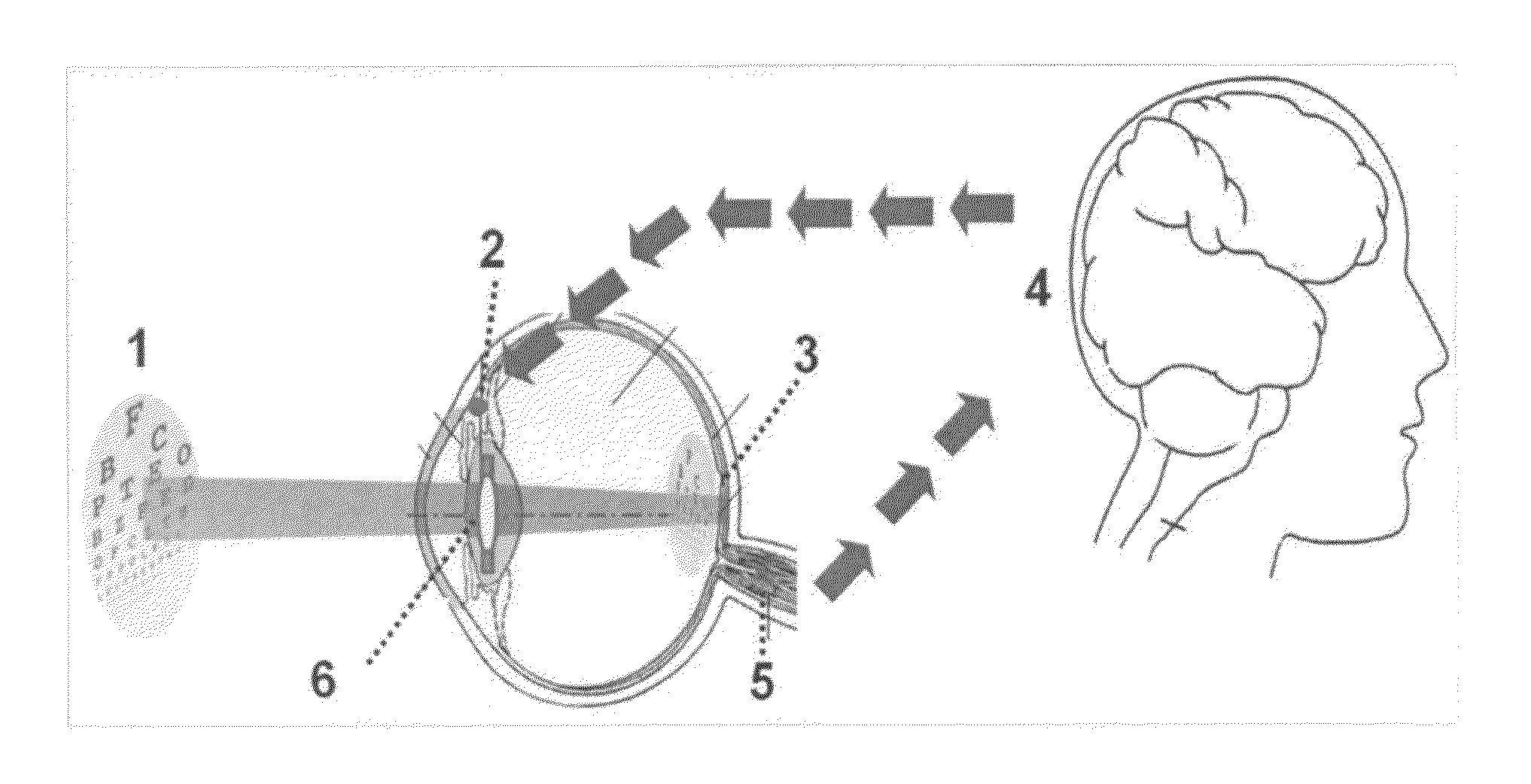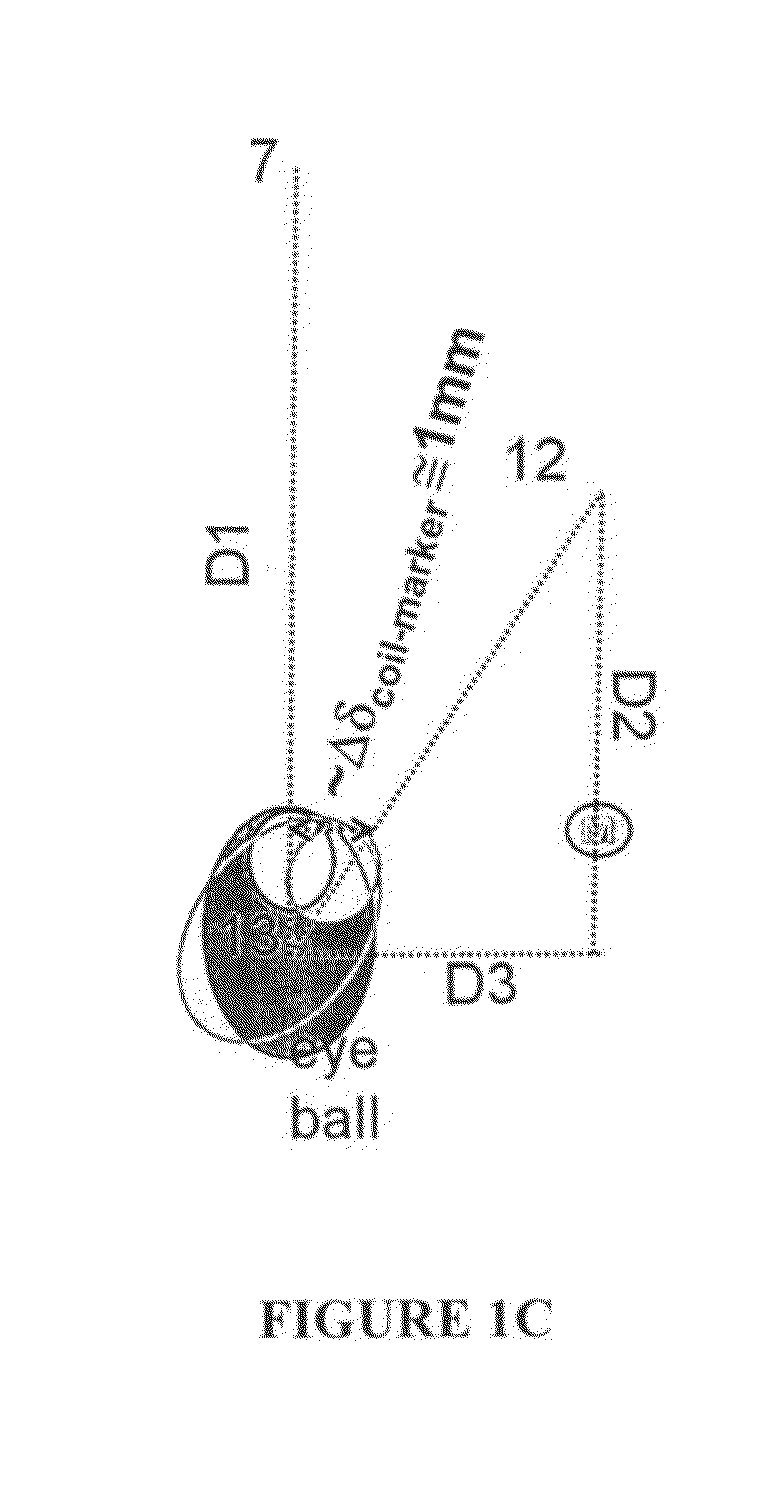Bionic eye lens
a bionic lens and eye technology, applied in the field of human vision restoration or improvement, can solve the problems of partial image blur, halo and glare effect, deterioration of the mechanical control of the adaptive lens by the ciliary muscle, etc., and achieve the effect of restoring or improving the quality of human vision
- Summary
- Abstract
- Description
- Claims
- Application Information
AI Technical Summary
Benefits of technology
Problems solved by technology
Method used
Image
Examples
example 1
Novel Artificial Lens (A)
[0129]The novel artificial lens operates electro-optically and comprises a transparent, refractive liquid-crystal display that is AC voltage controlled in order to generate a lens with desired dioptric power.
[0130]A liquid crystal layer is sandwiched between two transparent (e.g. glass or transparent polymer) slides, of which one or both are curved, that are provided by a uniform electrode (indium tin oxide (ITO) electrodes) and a layer of coating to ensure planar alignment (nematic director tangential to the interface) of a liquid crystal without voltage applied on the electrodes. When a voltage is applied on the electrode, the electric field induces locally a change of nematic director towards a more homeotropic alignment (nematic director perpendicular to the interface), thus locally changing the local refractive index for a proper incoming light polarization from a value close to n / / (refractive index value for the electric field component of the electro...
example 2
Novel Conversion Mechanism (B)
[0136]The second part of the invention consists of a specific way to perform the conversion of the ciliary muscle contraction state changes, which are a measure of how the visual cortex wants to change the focal point of the eye, into a proportional change of voltage signal for steering (by means of direct analogue electronics, or via a digital circuitry including additional signal processing and monitoring) the intra-optical lens, and thus its dioptric strength. Electro-myographic signals from the nerves in or towards the ciliary muscle can be picked up for processing. Electrodes are capable of recording activity from one or a small number of nerve fibers or cell bodies. See, for example, the methods and devices described in U.S. Pat. No. 6,647,296, incorporated herein by reference in its entirety. Electrodes on the scalp or brain surface record from a large number of neurons in aggregation, providing information about the aggregate activity of large p...
example 3
Energy Source (Q)
[0137]In a particular embodiment, the electric energy, necessary to drive the electronic detection and driving circuitry, is supplied by a rechargeable battery, which can be charged via a transformer circuit between a receiving coil in the intra-optic lens and a transmitting coil in front of the eye (e.g. in the glasses or pillow of the person). Alternatively, the energy transmission can be achieved by daylight, and if necessary by sending additional, invisible infrared (IR) light from the person's glasses into the eye, to be picked up and converted to electric current in a solar cell placed on the intra-optic device. The electromagnetic interaction between a circuit in front of the person and the intra-optic device can also be used to monitor or the actions of the device, where information is transferred via AM of FM modulation of the electromagnetic waves. External control of the dioptric power of the intra-optic lens offers the possibility to measure the distance...
PUM
 Login to View More
Login to View More Abstract
Description
Claims
Application Information
 Login to View More
Login to View More - R&D
- Intellectual Property
- Life Sciences
- Materials
- Tech Scout
- Unparalleled Data Quality
- Higher Quality Content
- 60% Fewer Hallucinations
Browse by: Latest US Patents, China's latest patents, Technical Efficacy Thesaurus, Application Domain, Technology Topic, Popular Technical Reports.
© 2025 PatSnap. All rights reserved.Legal|Privacy policy|Modern Slavery Act Transparency Statement|Sitemap|About US| Contact US: help@patsnap.com



